Your skin is not just a reflection of your skincare routine. It is also a direct mirror of your gut health. The gut-skin axis is a real scientific concept that shows how the state of your digestive system can influence inflammation, hydration, and even breakouts. If you want glowing, clear skin this summer, it may be time to focus less on expensive serums and more on what you put on your plate. Your microbiome, which is the collection of bacteria living in your gut, plays a big role in regulating inflammation and nutrient absorption. Both of these processes impact how your skin looks and feels. These seven simple foods are backed by research and can help you support both your gut and your glow.
Yogurt and Kefir
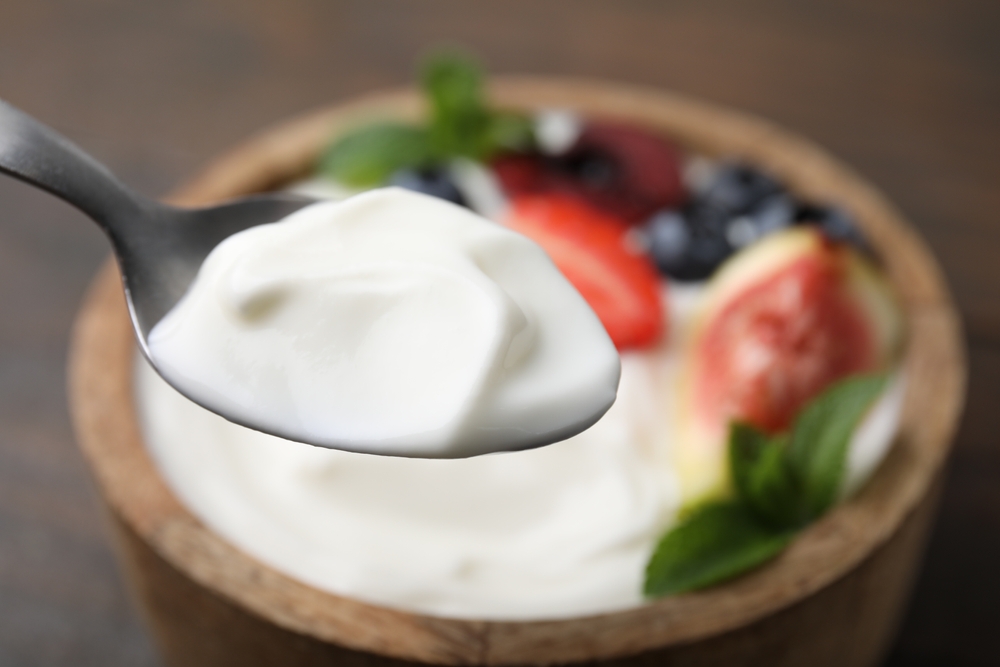
Fermented dairy products like yogurt and kefir are packed with probiotics. These are live beneficial bacteria that help balance your gut microbiota. A healthy gut can reduce systemic inflammation, which often shows up as redness or acne on the skin. Yogurt also contains lactic acid which may help improve skin moisture and texture from within. Choose plain, unsweetened options to avoid the added sugars that can trigger breakouts. Kefir offers even more strains of probiotics than yogurt, making it a powerhouse for gut health. Drinking a glass of kefir in the morning or adding a scoop of plain yogurt to your lunch can be a small change with a noticeable impact. Your skin benefits when your gut bacteria are balanced and thriving.
Sauerkraut and Kimchi
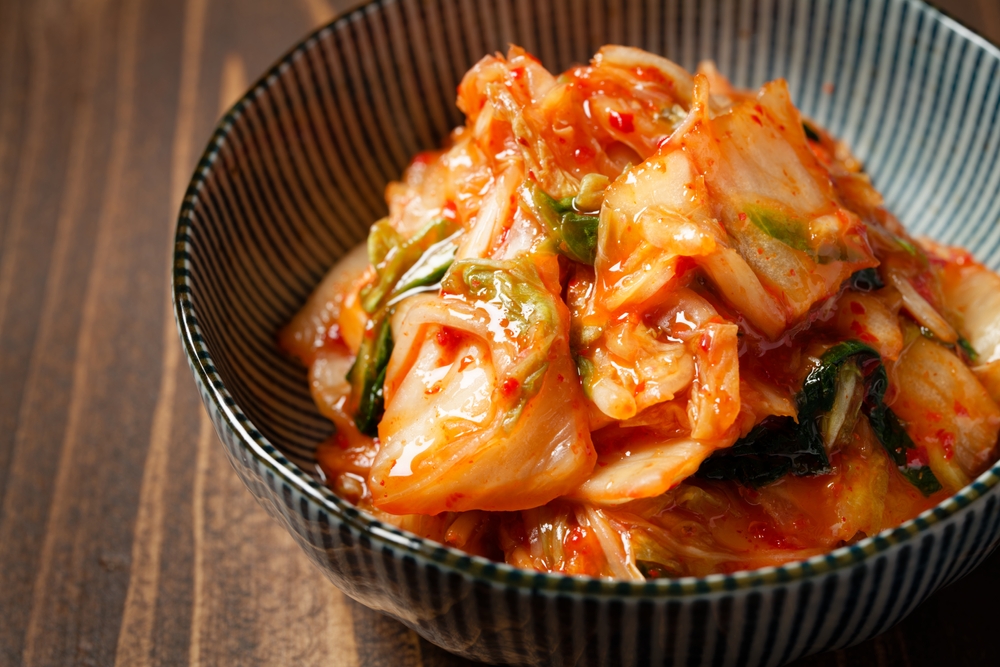
Both sauerkraut and kimchi are fermented vegetables that support digestion and immunity. They are rich in lactic acid bacteria that promote gut flora diversity. This matters because a diverse gut microbiome helps reduce inflammatory markers that are often linked to acne and eczema. These foods also provide antioxidants and vitamins like C and K, which protect the skin against free radicals. Kimchi includes garlic and ginger, both of which have antimicrobial and anti-inflammatory properties. Sauerkraut offers a mild, tangy flavor that pairs well with salads or sandwiches. By including a tablespoon or two of these fermented vegetables daily, you support your digestive health while enhancing your skin’s natural glow.
Chia Seeds
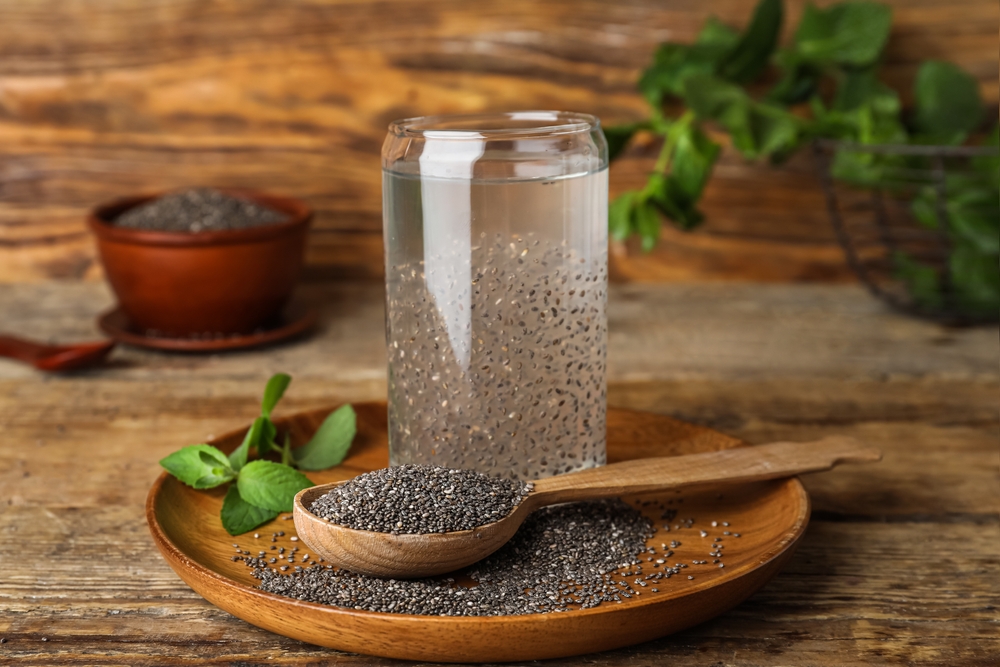
Chia seeds are rich in fiber and omega-3 fatty acids. The fiber feeds beneficial bacteria in the gut, helping them flourish and outnumber harmful strains. Omega-3s help reduce skin inflammation, which can lessen redness, acne, or puffiness. These tiny seeds also help your body retain moisture, which is crucial during hot summer months when skin often becomes dehydrated. Chia seeds form a gel-like texture when soaked, making them ideal for puddings, smoothies, or even as an egg substitute in recipes. Consuming just one or two tablespoons a day can support bowel regularity, minimize toxins, and promote smoother, more hydrated skin.
Avocados
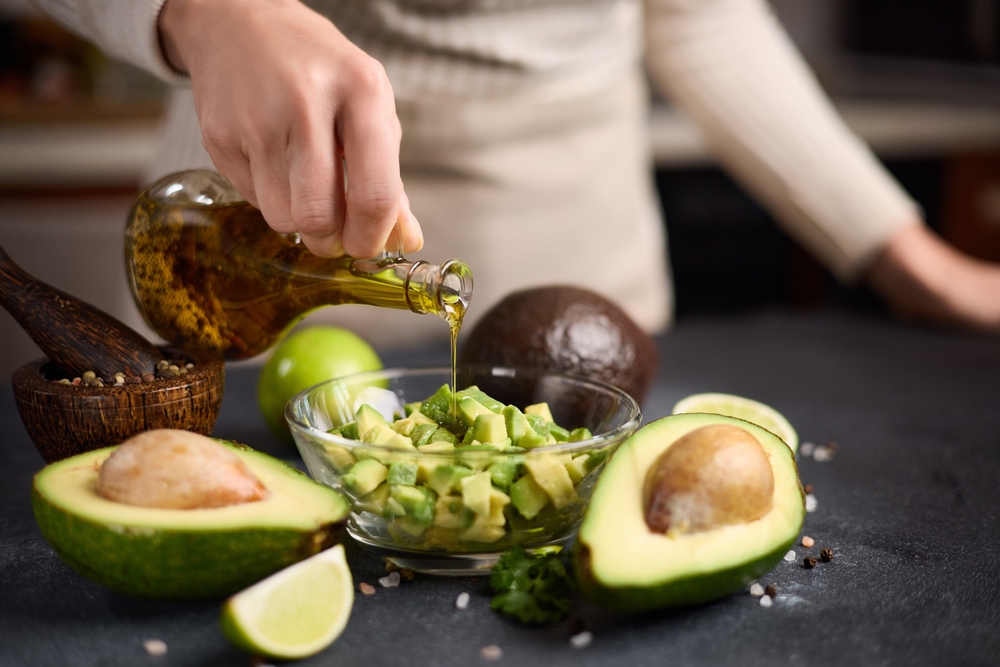
Avocados are packed with healthy fats, particularly monounsaturated fatty acids that help maintain the skin’s lipid barrier. A strong lipid barrier keeps the skin soft, supple, and protected against environmental stressors. They also contain vitamin E, a powerful antioxidant that protects cells from oxidative damage. Additionally, avocados support the absorption of fat-soluble vitamins like A, D, and K, all of which benefit skin health. Avocados are also high in fiber, which feeds the gut microbiome and supports digestive health. Spread it on toast, blend it into smoothies, or use it as a creamy base for dressings. The healthy fats in avocados not only nourish your skin but also keep you full and energized.
Papaya
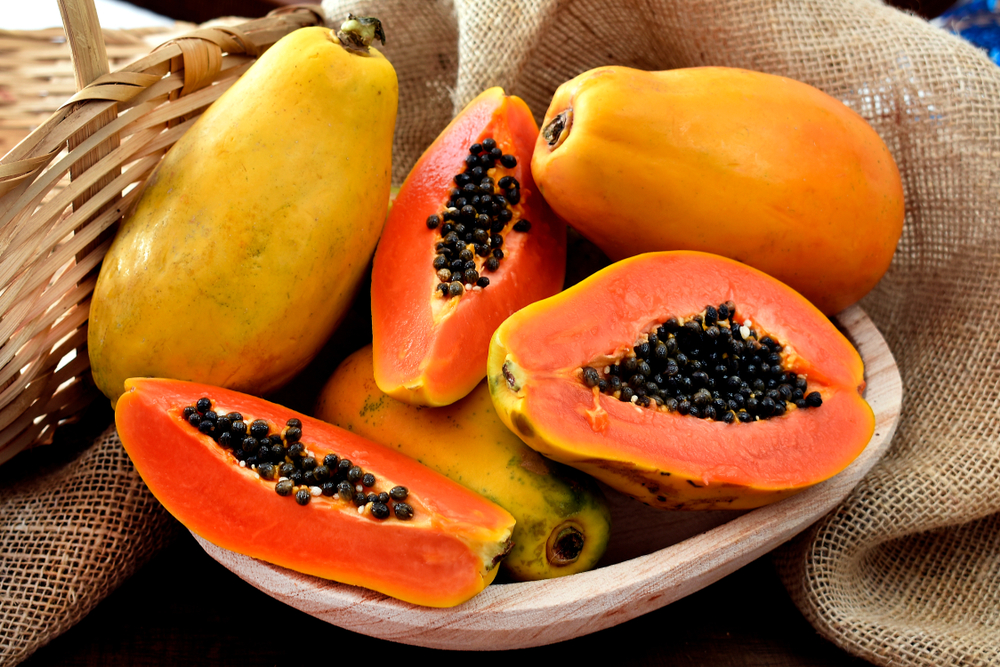
Papaya contains the digestive enzyme papain, which helps break down proteins and supports smoother digestion. This is useful for reducing bloating and improving nutrient absorption. Papaya is also a great source of vitamin C and beta-carotene. Vitamin C helps the body produce collagen, a structural protein essential for firm, youthful skin. Beta-carotene converts into vitamin A in the body, which promotes cell turnover and protects against sun damage. Eating papaya regularly may help reduce pigmentation, dullness, and skin roughness. Enjoy it fresh or add it to fruit salads and salsas. It is a low-calorie, gut-friendly way to boost your glow.
Bone Broth
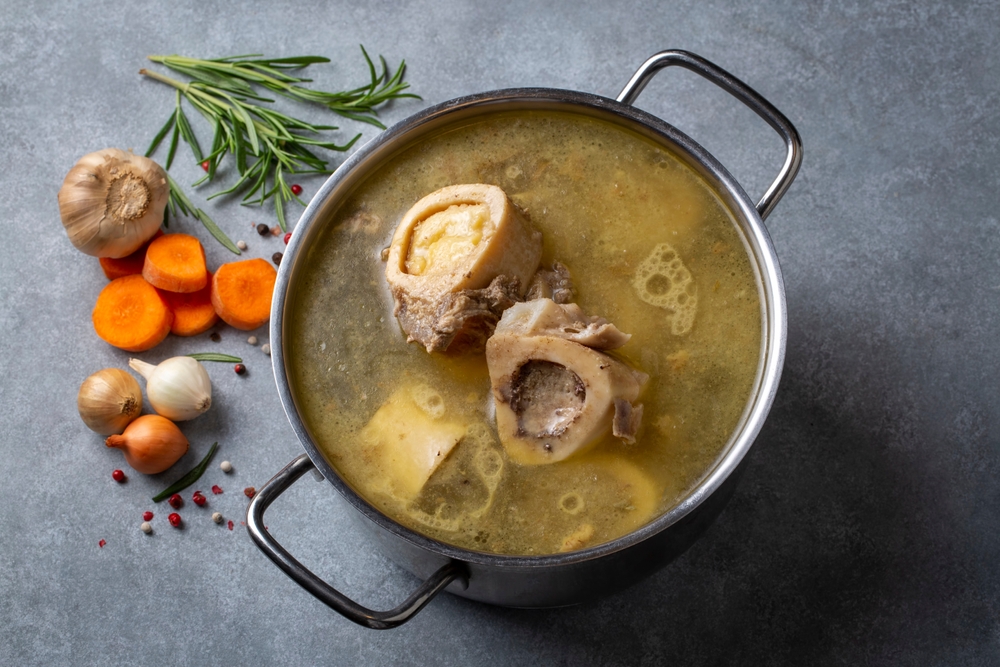
Bone broth is rich in collagen, gelatin, and amino acids like glycine and proline. These compounds support the structure of the gut lining and improve skin elasticity. The gelatin in bone broth acts as a prebiotic, feeding beneficial gut bacteria and helping to restore the gut barrier. A healthy gut barrier prevents toxins from entering the bloodstream, which can otherwise trigger inflammation and skin issues like rashes or acne. Bone broth is also hydrating and contains minerals like magnesium and potassium. Sipping on warm bone broth or using it as a base for soups and stews can soothe digestion and support clear skin from the inside out.
Leafy Greens
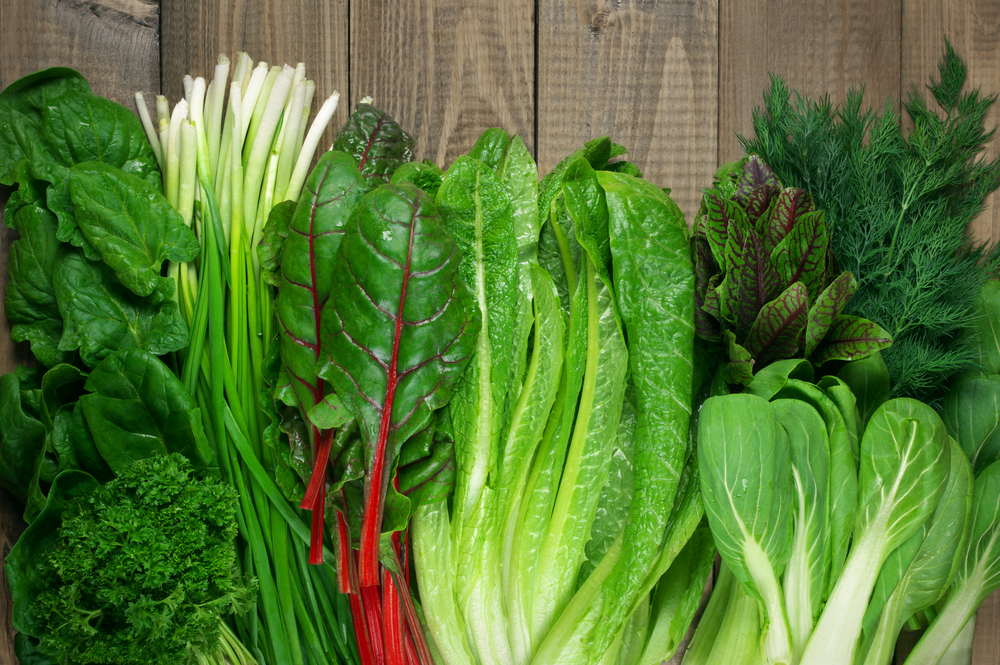
Leafy greens like spinach, kale, and arugula are full of fiber, chlorophyll, and vitamins that support detoxification. The fiber supports regular bowel movements, which helps eliminate toxins efficiently. Chlorophyll has been shown to reduce inflammation and oxidative stress in the body. Leafy greens are also rich in folate, which helps with DNA repair and cell regeneration. When your body can renew cells efficiently, your skin appears fresher and more radiant. These greens also support liver function, which plays a central role in both digestion and skin clarity. Whether tossed into a salad, blended into a smoothie, or steamed as a side, leafy greens are essential for a skin-friendly diet.
Read More: What Eating One Meal a Day Really Does to Your Body
Why Gut Health Matters for Skin
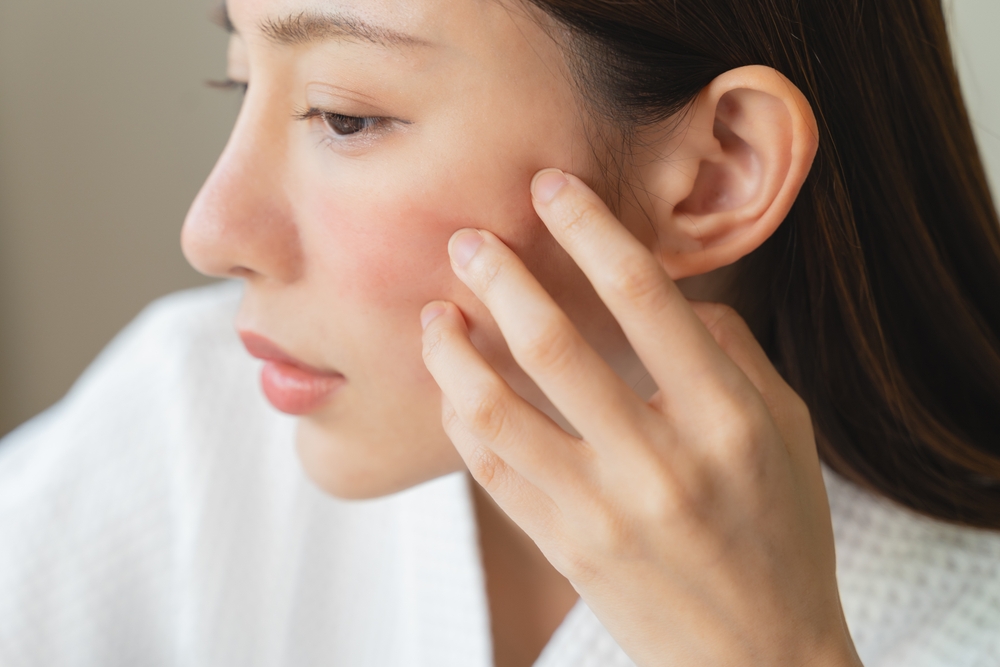
The connection between gut health and skin is driven by the immune system and the balance of gut bacteria. When the gut is imbalanced, toxins, pathogens, and undigested food particles may leak into the bloodstream. This process is known as increased intestinal permeability or leaky gut. The body responds with inflammation, which often surfaces on the skin as acne, rosacea, or eczema. A healthy gut also helps regulate hormones, including those that influence oil production and inflammation. By eating gut-friendly foods, you support the microbiome, reduce internal inflammation, and increase the absorption of skin-supporting nutrients.
Tips for Getting the Most Out of These Foods

To maximize your results, consistency matters. Eating a single serving of yogurt or avocado once a month will not change your skin. Try rotating these foods into your daily meals. Hydration is also key, especially during summer. Water helps transport nutrients to cells and flushes out waste. Limit added sugars and processed foods, which can disrupt gut bacteria and trigger skin problems. Pairing gut-friendly foods with plenty of water, sleep, and movement can create the ideal environment for your skin to thrive. Start with one change, like adding kefir to your breakfast, and build from there.
Transformation Begins

What you eat has a powerful effect on your skin, and the gut is where that transformation begins. By nourishing your microbiome with probiotic-rich foods, healthy fats, enzymes, and fiber, you improve digestion, regulate inflammation, and support skin regeneration. Clear summer skin is not about perfection. It is about balance. With these seven simple foods, you can enjoy both a healthy gut and a radiant, natural glow that lasts all season long.
Read More: 7 Smart Strategies to Achieve Your Healthy Eating Goals
Disclaimer: This information is not intended to be a substitute for professional medical advice, diagnosis or treatment and is for information only. Always seek the advice of your physician or another qualified health provider with any questions about your medical condition and/or current medication. Do not disregard professional medical advice or delay seeking advice or treatment because of something you have read here.
Disclaimer: This article was created with AI assistance and edited by a human for accuracy and clarity.

